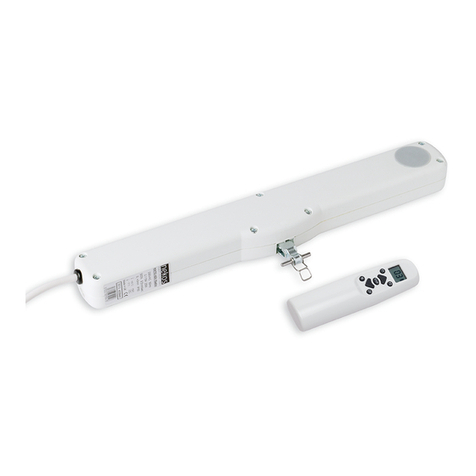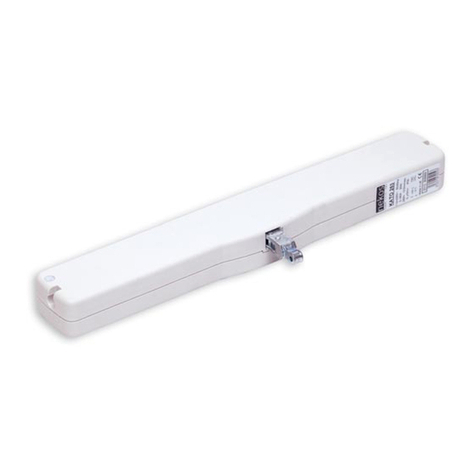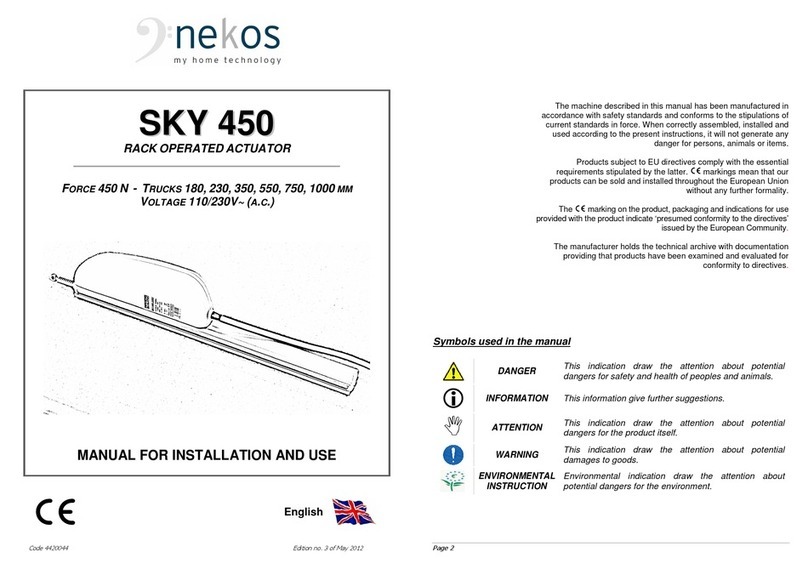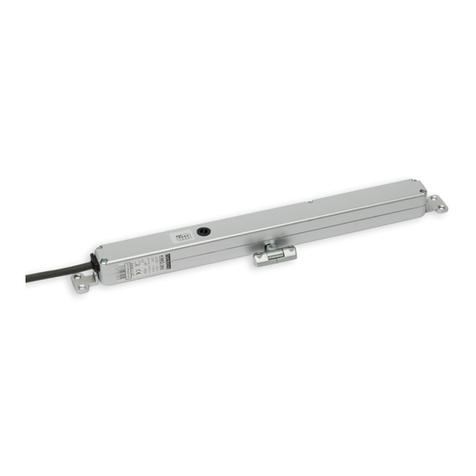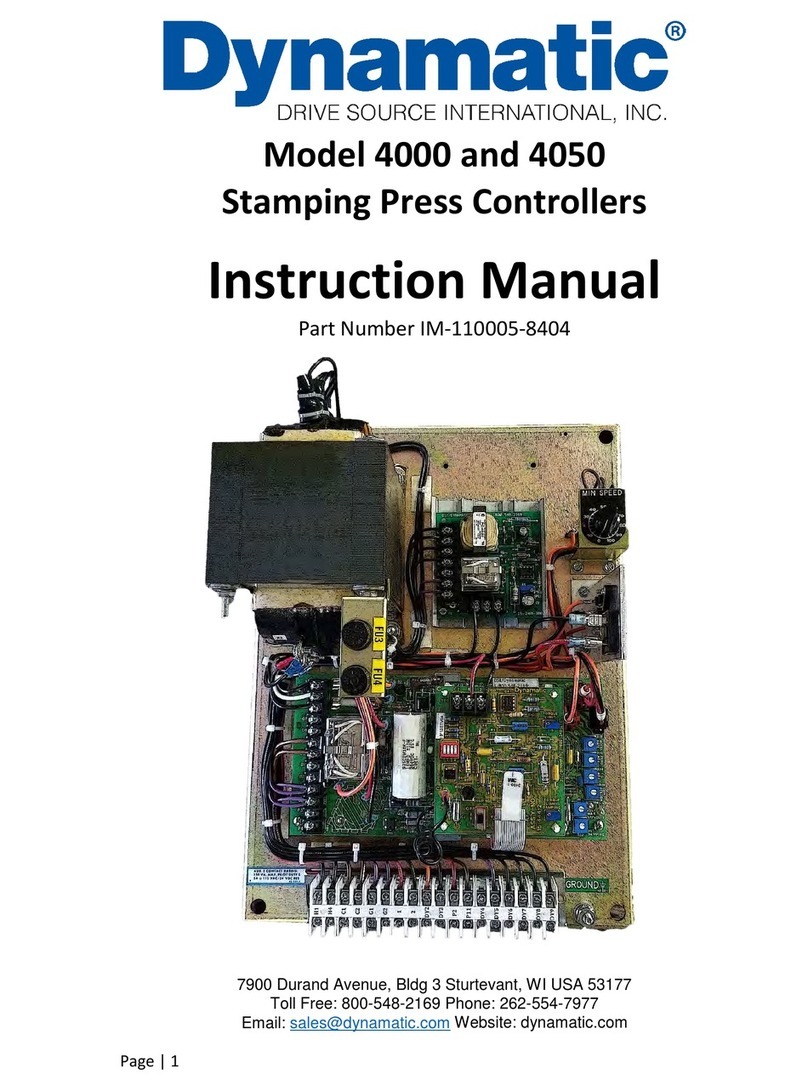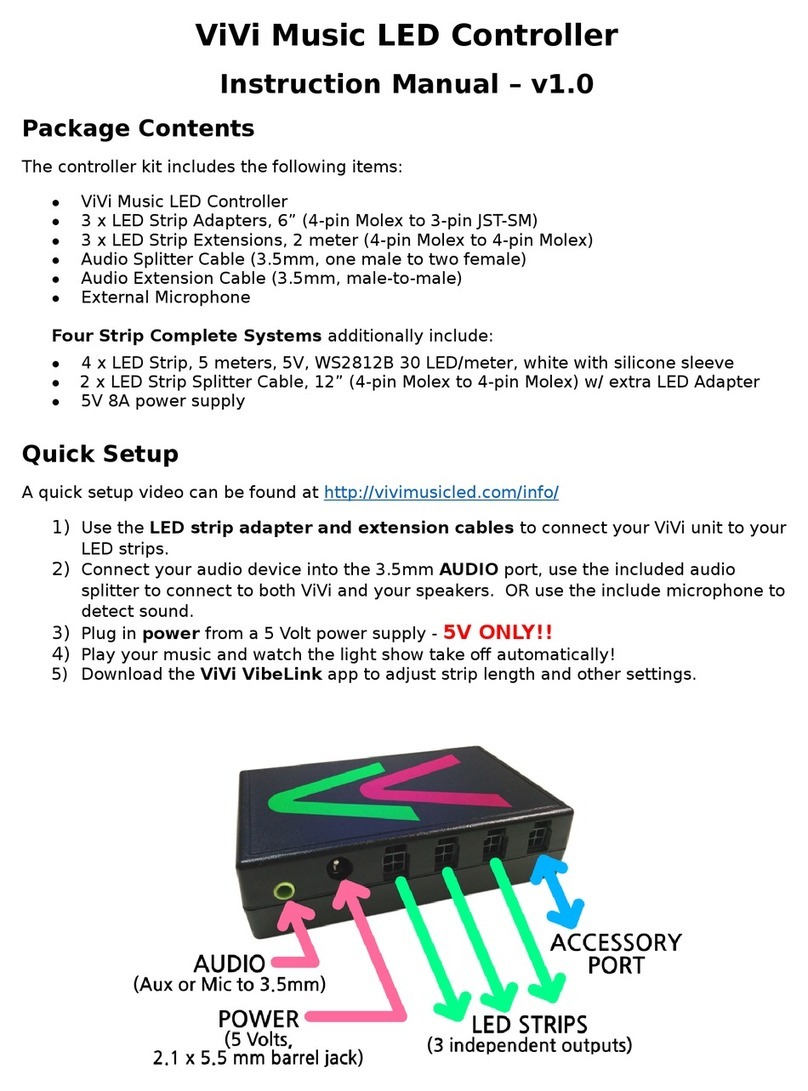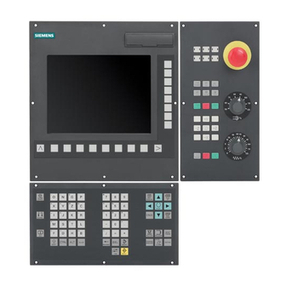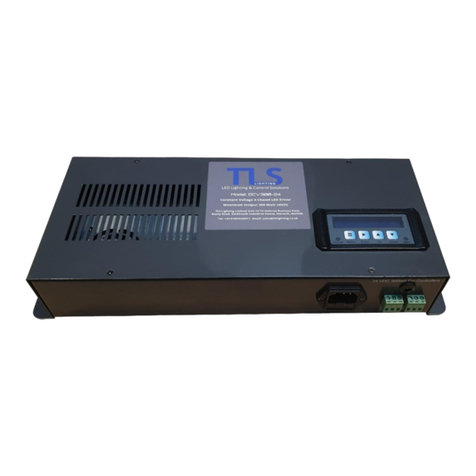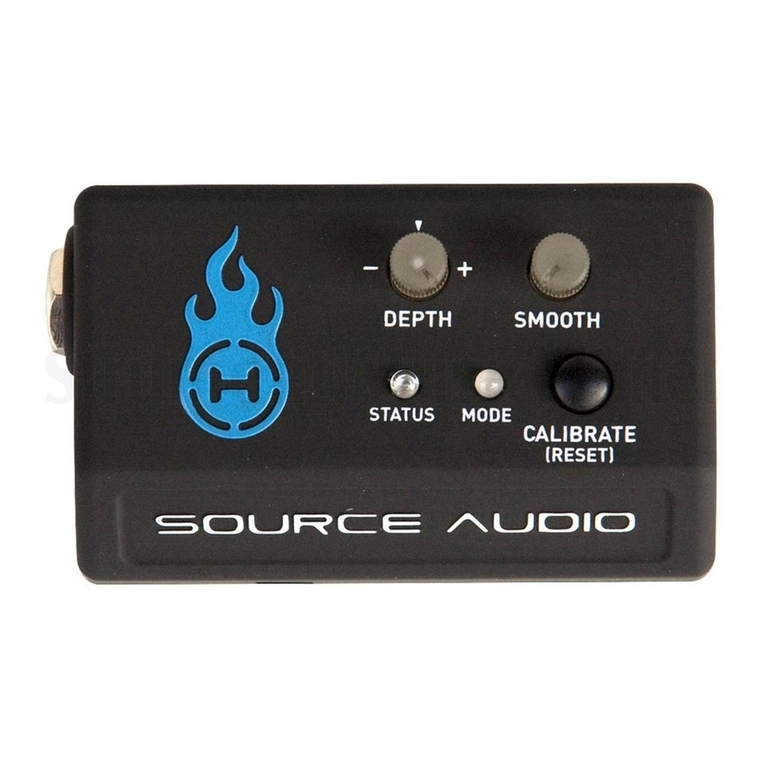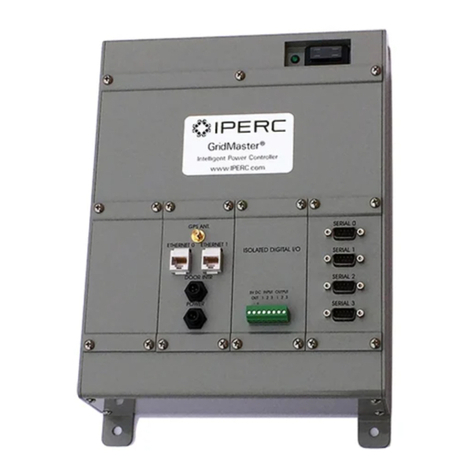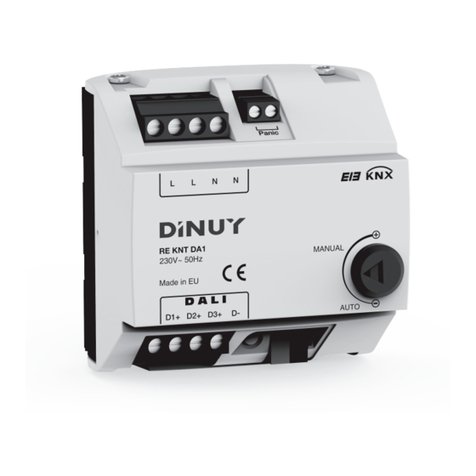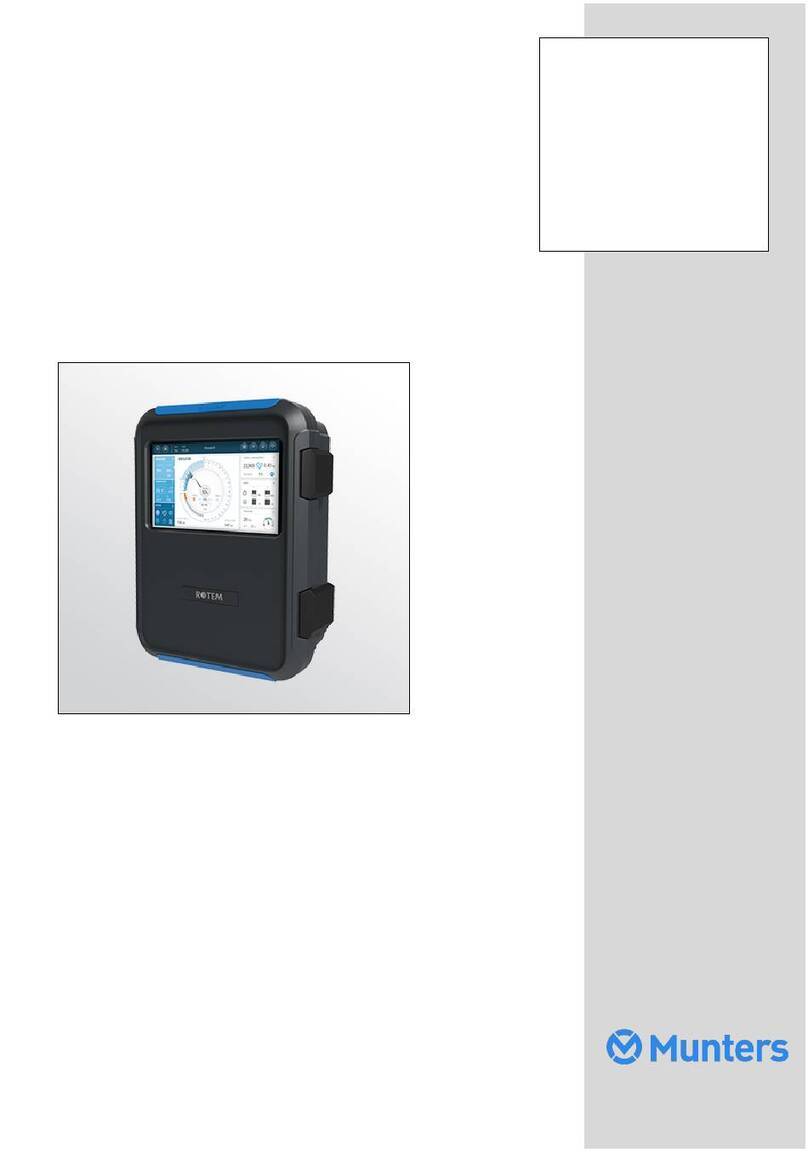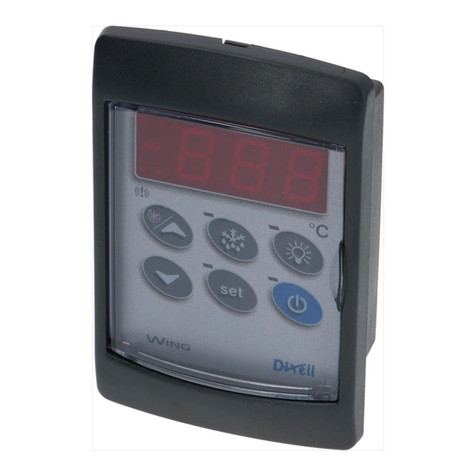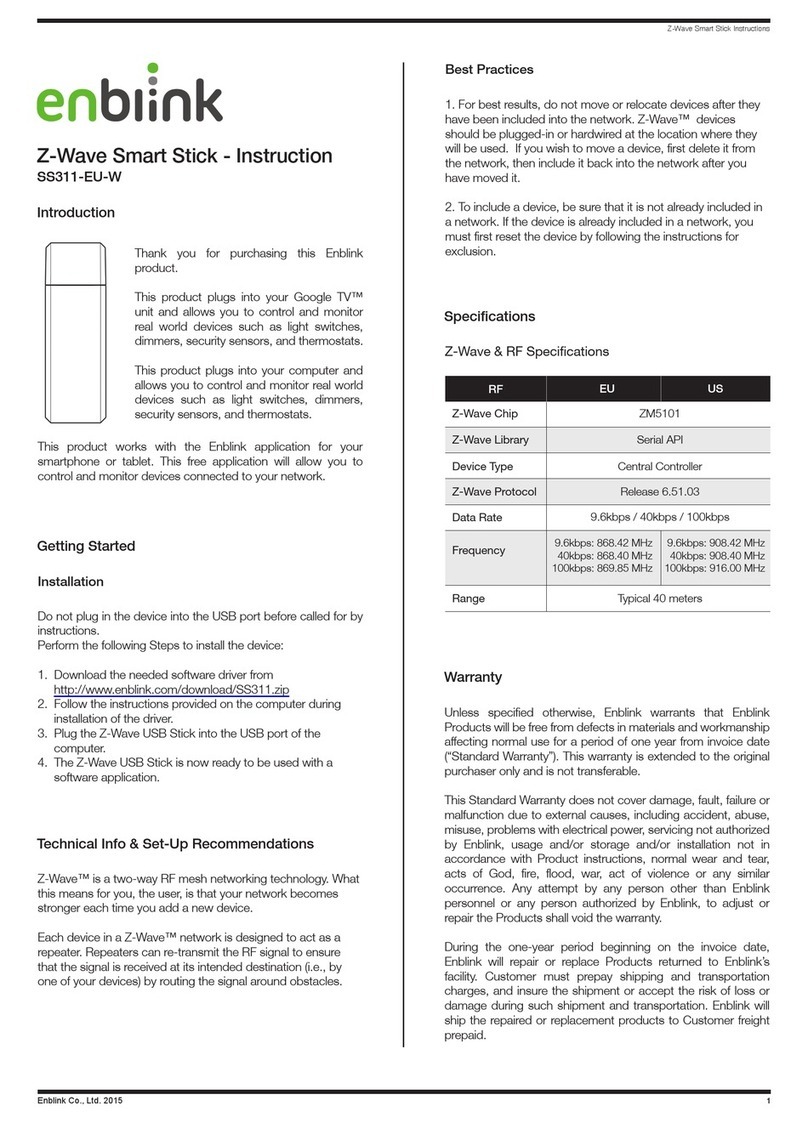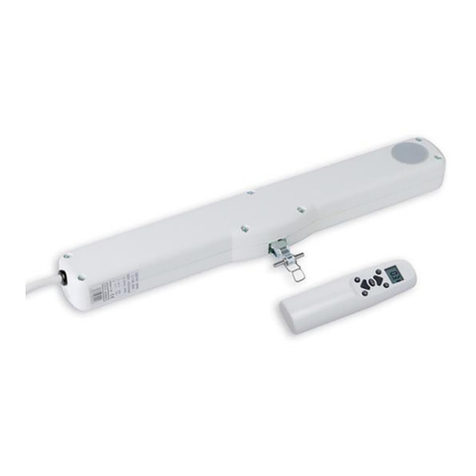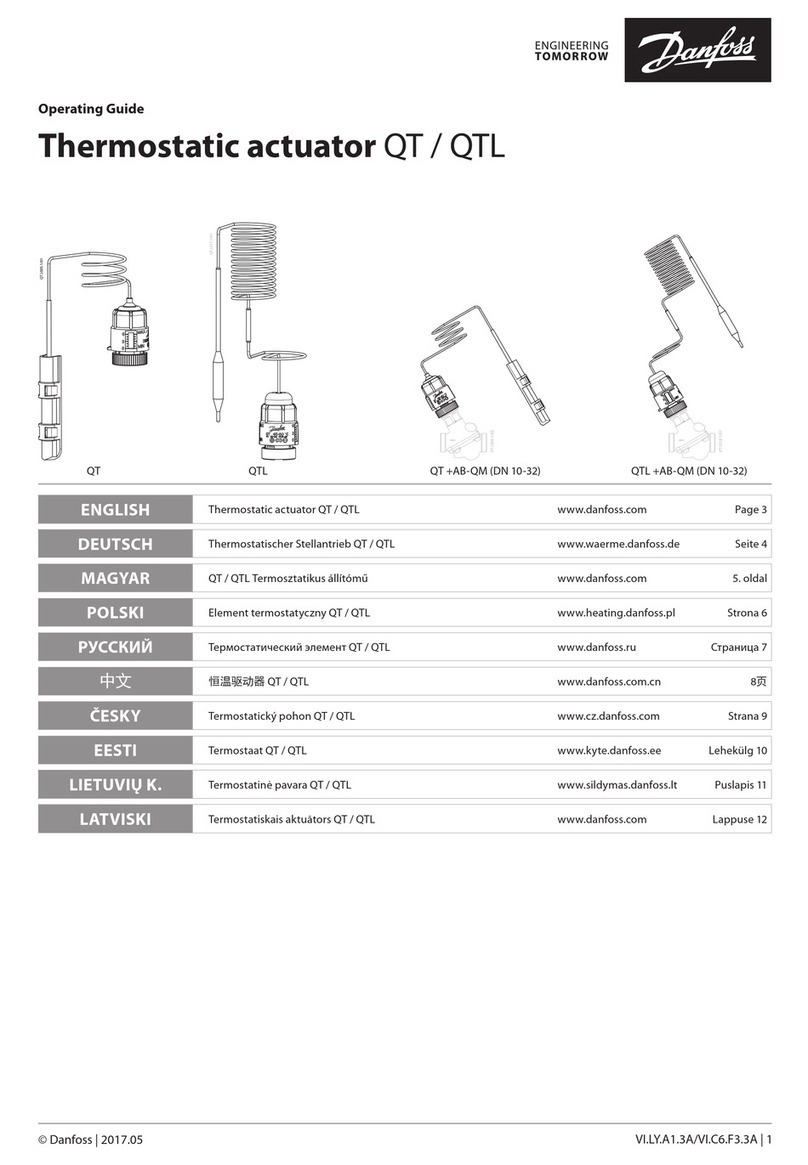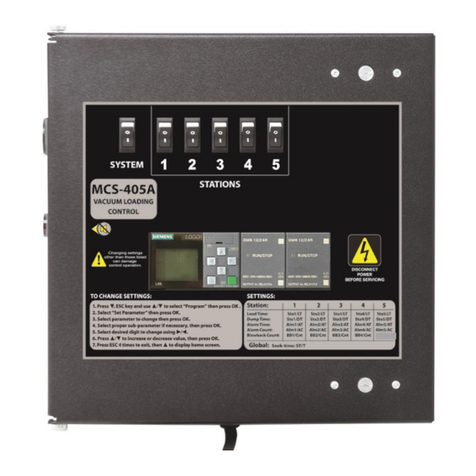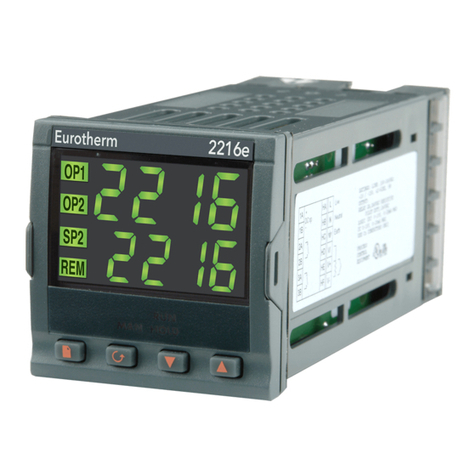nekos KATO 253 User manual

4420052 – Rev 1710
KATO 253
MANUALE ISTRUZIONI
ATTUATORE A CATENA
Forza 250N – Corsa massima 360 mm
Alimentazione elettrica 100-240V~ 50/60Hz – 24V
INSTRUCTION MANUAL
CHAIN ACTUATOR
Force 250N – Maximum stroke 360 mm
Electrical feeding 100-240V~ 50/60Hz – 24V
BETRIEBSANLEITUNG
KETTENANTRIEB
Kraft 250N – Maximalhub 360 mm
Spannungsversorgung 100-240V~ 50/60Hz – 24V
DE
IT
EN
3
nekos products have been manufactured in accordance with safety standards and conforms to the
stipulations of current standards in force.
When correctly assembled, installed and used according to the present instructions, they will not
generate any danger for persons, animals or items.
Symbols used in the manual
DANGER This indication draw the attention about potential dangers for
safety and health of peoples and animals.
INFORMATION This information give further suggestions.
ATTENTION This indication draw the attention about potential dangers for
the product itself.
WARNING This indication draw the attention about potential damages to
goods.
ENVIRONMENTAL
INSTRUCTION
Environmental indication draw the attention about potential
dangers for the environment.
English ................................................................................................................... 14
1. Security rules ............................................................................................................................ 14
2. Formulas and recommendations for installation ...................................................................... 15
3. Technical information about function ........................................................................................ 16
4. Manufacture and applicable standards or regulations .............................................................. 16
5. Technical data .......................................................................................................................... 16
6. Id plate and marking data ......................................................................................................... 17
7. Electrical power supply ............................................................................................................. 17
8. Instructions for assembly .......................................................................................................... 17
9. Electrical connections ............................................................................................................... 20
10. Programming the actuator ........................................................................................................ 21
11. Checking for correct assembly ................................................................................................. 21
12. Emergency manoeuvres, maintenance or cleaning .................................................................. 21
13. Troubleshooting ........................................................................................................................ 22
14. Environmental protection .......................................................................................................... 22
15. Certificate of guarantee ............................................................................................................ 22
16. Declaration of incorporation (for a partly completed machine) and EC declaration of
conformity ................................................................................................................................. 34

14
1. SECURITY RULES
PLEASE
NOTE:
IMPORTANT
SAFETY
INSTRUCTIONS.
C
AREFULLY OBSERVE ALL THE
FOLLOWING INSTALLATION INSTRUCTIONS TO ENSURE PERSONAL SAFETY. IMPROPER
INSTALLATION CAN SERIOUSLY ENDANGER SAFETY. KEEP THESE INSTRUCTIONS AFTER
INSTALLATION.
MANDATORY RISK ANALYSIS AND PROTECTION MEASURES.
The Nekos electrical actuators comply with the Machinery Directive (2006/42/EC), Standard IEC 60335-
2-103 (Particular requirements for drives for gates, doors and windows) and other directives and
regulations indicated in the attached Declarations of Incorporation and CE Conformity (at the end of the
manual). According to the Machinery Directive, actuators are “partly completed machinery” intended for
incorporation into doors and windows. The manufacturer/supplier of the window is required, with
exclusive responsibility, to ensure the compliance of the entire system with the applicable standards and
to issue CE certification. We strongly discourage any use of the actuators other than that specified and
therefore, in any case, the supplier of the complete system retains full liability.
For systems installed at a height of less than 2.5 m above floor level or other levels accessible to
users, the manufacturer/supplier of the window must conduct risk analysis regarding potential
harm (violent blows, crushing, wounds) caused to people by normal use or possible malfunction or
accidental breakage of the automated windows, and to implement suitable protective measures in
view of these. Such measures include those recommended by the specified standard:
- controlling the actuators via a “deadman’s button” placed near the system and within the
operator’s field of view, to ensure that people are out of the way during operation. The button
should be placed at a height of 1.5 m and operated by key if accessible to the public; or:
- use of contact safety systems (also included in the actuators) that ensure a maximum closing
force of 400/150/25 N, measured in accordance with paragraph BB.20.107.2 of IEC 60335-2-
103; or:
- use of non-contact safety systems (lasers, light grids); or:
- use of fixed safety barriers that prevent access to moving parts.
Automated windows are deemed adequately protected if they:
- are installed at a height of >2.5 m; or:
- have a leading-edge opening of <200 mm and a closing speed of <15 mm/s; or:
- are part of a smoke and heat evacuation system for emergency use only.
In any case, moving parts of windows that could fall below 2.5 m following breakage of a system
component need to be fixed or secured in order to prevent them from suddenly falling or
collapsing: e.g. the use of safety arms on bottom-hung windows.
The device is not intended for use by persons (including children) with reduced physical,
sensory or mental capabilities, or lacking experience and knowledge. Do not allow
children to play with the fixed controls and keep any remote-control units out of their
reach.
The actuator is destined exclusively for installation indoors. For any special application we
recommend you consult the manufacturer beforehand.
After removing packaging, check for any damage on the appliance.
MAINTENANCE and REPAIRS
Periodically check the installation by inspecting the cables, springs, rods and mechanical
parts for wear or damage. Do not use if repair or adjustment is required.
Disconnect the power supply during cleaning or maintenance operations.
Do not use solvents or jets of water to wash the appliance. The appliance should not be
submerged in water.
In the event of breakage or malfunction, switch the appliance off at the general switch and
call for the services of a qualified technician. Repairs should only be performed by
qualified personnel at assistance centres authorised by the manufacturer.
Engl
ish
15
Always request exclusive use of original spare parts. Failure to respect this condition
could compromise safety and invalidate the benefits contained in the warranty for the
appliance.
In the event of any problems or queries, consult your agent or contact the manufacturer
directly.
2. FORMULAS AND RECOMMENDATIONS FOR INSTALLATION
2.1. Calculation of opening / closure force
Using the formulas on this page, approximate calculations can be made for the force required to
open or close the window considering all the factors that determine the calculation.
Symbols used for the calculation
F (Kg) = Force for opening or closing P (Kg) = Weight of the window (mobile sash only)
C (cm) = Opening stroke (actuator stroke) H (cm) = Height of the mobile sash
For horizontal light domes or
skylights
F = 0.54 x P
(Eventual weight of snow or wind on the
cupola should be calculated separately).
For vertical windows
TOP HUNG WINDOWS, OUTWARD OPENING (A)
BOTTOM HUNG WINDOWS (B)
F = 0.54 x P x C : H
(Eventual load of favourable or unfavourable wind
on the sash should be calculated separately.)
2.2. Maximum opening according to height of sash
The actuator stroke is in accordance with the height of the sash and its application. Check that the
actuator stroke does not touch the profile of the sash and that the chain does not exert force on the
window frame (measurements in mm).
ATTENTION. For safety reasons the actuator should not be assembled if dimensions are
inferior to those indicated in the table below. In the event that the height of the sash should
be lower, call on the manufacturer to check the appliance.
Mode of installation Selection of actuator stroke
240
360
Light domes, skylights or vertical top hung windows opening
outwards with frontal assembly 400 550
Top hung windows opening outwards with horizontal assembly 400 550
Bottom hung windows (motor on frame) 400 550
Bottom hung windows (motor on sash) Consult manufacturer

16
3. TECHNICAL INFORMATION ABOUT FUNCTION
The chain actuator opens and closes the window using a double row steel chain inside a sheath.
Movement is generated using electrical energy that powers a reduction motor controlled by a
functional electrical device. Windows can be programmed to open and the device allows chain
opening at 240 and 360 mm. When the window returns to start position, that is during closure, the
stroke-end uses an electronic self regulating process with absorption of energy and no regulation
is therefore required.
The actuator is produced by the factory with the stroke-end for return set at around +1 cm (out by
1 cm). This allows the actuator to be assembled without electrical energy powering movement and
means that the window remains closed after assembly. The joint between actuator and support
brackets is quick, requires no fixing screws (NEKOS patent) and allows the actuator to rotate to
follow the track of the chain even on shorter windows.
4. MANUFACTURE AND APPLICABLE STANDARDS OR REGULATIONS
INTENDED USE
The chain operated series
KATO 253
actuator has been designed and
manufactured to open and close top hung windows, bottom hung windows, dormer
windows, light domes and skylights. It has been specifically designed for ventilation and
climate control; any other use is strongly discouraged, with the supplier of the entire
system in any case retaining sole liability.
The actuator is manufactured in accordance with the EC Directives and Regulations listed
in the attached Declaration of Incorporation and Conformity .
Electrical connections must conform to regulations in force for the design and set up of
electrical equipment.
To ensure efficient separation from the grid, an approved type of bipolar “dead-man”
switch should be used. An omnipolar general power switch with minimum distance of 3
mm between contacts should be installed upstream of the control line.
The actuator is packaged in cardboard boxing and each package contains:
Electrical actuator with either 100-240V~ 50/60Hz or 24V with electrical cable directly
connected to the machine.
Drilling template.
Standard support brackets (A).
Bracket for bottom hung window (C).
Bracket for top hung window (D).
Instructions manual.
5. TECHNICAL DATA
Model
KATO 253/230V
KATO 253/24V
Force exerted by thrust and traction 250 N
Strokes (can be selected at any time) 240, 360 mm
Power supply voltage 100-240V~ 50/60Hz 24V
Rated absorbed current 0,42-0,21 A 0,78 A
Power absorbed at nominal load ~ 23-20 W ~ 19 W
No load speed 15 mm/s 13,3 mm/s
Duration of no load stroke (360 mm) 24 s 27 s
Double electrical insulation YES Low tension
Type of service S
2
of 3 min
Operating temperature - 5 + 65 ºC
Protection index for electrical devices IP30
Adjustment of connection to window frame Automatic definition of position
Parallel powering of two or more motors YES (max 30 actuators)
17
Synchronised function
Not foreseen
Holding nominal force (it can vary according to
the chosen brackets) 1500N
Stroke-end at opening At absorption of power
Stroke-end at closing At absorption of power
Length of power cable 1 m
Dimensions 356x56x33,5 mm
Weight 0,83 Kg 0,80 Kg
The data indicated in these figures is not binding and is subject to variation without notification.
6. ID PLATE AND MARKING DATA
The Machine Directive classifies actuators as “partly completed machinery” and they are supplied
with a Declaration of Incorporation, attached to this booklet; with regard to the electrical side, they
bear marking and come under the LVD and CEM Directives and the other Regulations listed in
the attached Declaration of Conformity.
With this marking, the actuators can be sold and used throughout the European Union with no
further requirements. The plate data is displayed on an adhesive label placed on the outside of the
container, printed in black on a grey background.
7. ELECTRICAL POWER SUPPLY
The KATO 253 actuator is commercially available in two versions identified according to electrical
specifications:
1. KATO 253 230V~: runs on grid tension of 100-240V~, 50/60Hz, with a three wire cable
(LIGHT BLUE, common neutral; BLACK, phase open; BROWN, phase closed).
2. KATO 253 24V: runs on 24V , with two wire cable, LIGHT BLUE, connected to the +
(positive) opens; Brown, connected to the + (positive) closes.
24V low voltage actuators can be powered using a station with emergency battery or security
power supply unit with an output voltage of 24V (min. 20,4V, max. 28,8V).
7.1. Selection of power cable section
For 24V power supply cable section must be checked and calculated according to cable length.
The following table indicates maximum cable lengths for connection to motors.
Cable section
Maximum cable length
4.00 mm²
~ 270 m
2.50 mm²
~ 170 m
1.50 mm²
~ 100 m
0.75 mm²
~ 50 m
0.50 mm²
~ 35 m
8. INSTRUCTIONS FOR ASSEMBLY
These indications are for specialised technical personnel and basic work and safety
techniques are not indicated.
All preparatory, assembly and electrical connection operations must be performed by specialised
technical personnel to guarantee optimal function and service of the actuator.
Check that the following fundamental conditions have been met:
Before installing the actuator, check that the moving parts of the window on which it is to
be installed are in perfect working condition and that they open and close properly and
are well balanced (where applicable).

18
Actuator specifications must be sufficient for movement of the window without
encountering any obstacle. The limits indicated in the technical data table must not be
superseded (page 16) and the most appropriate stroke should be selected. Calculations
should be checked using the formula indicated on page 15.
Attention.
Check that the electrical power supply corresponds to that indicated on the
TECHNICAL DATA label on the machine.
Ensure that the actuator has not been damaged during transport, first visually and then by
powering in both directions.
Check that the width of the inside of the window (where the actuator is to be assembled)
is over 375 mm, otherwise the actuator should not be installed.
Check that once the actuator has been installed the distance
between the fixed part of the window frame (where the actuator
is to be assembled) and the mobile part of the window frame
(where the bracket is to be fixed) is greater than or equal to 0
mm (aside figure). If this is not the case the actuator will not
function correctly as the window will not close correctly. If
required, add additional thickness below the support brackets
to reset the quota.
For bottom hung window frames injury could be caused by accidental falls of the window.
An appropriately sized flexible link arm or fall prevention safety system designed to resist
a force equal to at least three times the total weight of the window MUST be installed.
8.1. Preparation of actuator for assembly
Before starting assembly of the actuator, prepare the following material for completion, equipment
and tools.
For fixing onto metal window frames: M5 threaded inserts (6 pieces), M5x12 flat headed
metric screws (6 pieces).
For fixing onto wooden window frames: self threading screws for wood Ø4.5 (6 pieces).
For fixing onto PVC window frames: self threading screws for metal Ø4.8 (6 pieces).
Equipment and tools: measuring tape, pencil, drill/screwdriver, set of drill heads for metal,
insert for screwing in, electricians pliers, screwdrivers.
8.2. Assembly for top hung windows, outward opening
Outward application Figure 2 Figure 3
Figure 4 Figure 5 Figure 6
Above the drawing of specific application using accessories provided. For different
mountings, please contact manufacturer.
A. Trace centrepoint X in pencil onto the window frame (Fig.2).
B. Use brackets “A” and hinge “D” (provided) (Fig.3).
>=0
19
C. Apply the template onto the window frame (fixed part), taking care to ensure that the axis of the
template coincides with centrepoint X traced earlier (Fig.4). Attention: for non coplanar window
frames, cut the grey part of the template along the red line and apply onto the mobile part of the
window frame, taking care to keep it in the same reference position for the X axis.
D. Bore the window frame at the points indicated on the template (Fig.5).
E. Apply the brackets (A) to the window frame using flat head screws as indicated above. Check
both horizontal and vertical alignment of brackets.
F. Assemble the hinge for top hung windows (D) onto the mobile part of the window frame using
the reference points indicated on the template.
G. Complete assembly between chain terminal and quick hook using the Ø4x32 pin provided and
insert into central position (Fig.6).
H. Hook the actuator onto the brackets inserting the two channels at the end of the actuator into
the pins provided.
I. Rotate the actuator 90°, bring the chain terminal up to the hinge and insert the pin into the
channel of the latter. Connect the quick hook onto the bracket. At initial connection the hook will
present some resistance, this is normal as pieces need to adjust to their sockets.
J. Perform the electrical connections according to the diagram below or the label on the feeder cable.
K. Check that the output of the chain is perfectly aligned with the bracket. In the event that this
should not be the case, loosen the fixing screws and reposition the bracket correctly.
L. Perform a complete test of opening and closing of the window frame. After closure, check that
the window frame is completely closed and check pressure against the seals.
M. The stroke-end of the actuator during return is automatic. The appliance exerts traction to
guarantee perfect pressure against the seals.
8.3. Assembly for bottom hung windows
Inward application – transom window Figure 7 Figure 8
Figure 9 Figure 10 Figure 11
Above the drawing of specific application using accessories provided. For different
mountings, please contact manufacturer.
a) Before starting works, at least two flexible mechanical link arms or other form of safety stops MUST
be installed to guarantee hold and prevent accidental falling of the window in order to provide safe
working conditions.
b) Trace centrepoint X in pencil onto the window frame (Fig.7).
c) Use brackets “A” and hinge “C” (provided) (Fig.8).
d) Apply the template onto the window frame (fixed part), taking care to ensure that the axis of the
template coincides with centrepoint X traced earlier (Fig.9). Attention: for non coplanar window
frames, cut the grey part of the template along the green line and apply onto the mobile part of
the window frame, taking care to keep it in the same reference position for the X axis.
e) Bore the casement at the points indicated on the template (Fig.10).

20
f) Apply the brackets (A) to the window frame using flat head screws as indicated above. Check
both horizontal and vertical alignment of brackets.
g) Assemble the bracket for bottom hung windows onto the mobile part of the window frame using
the reference points indicated on the template.
h) Complete assembly between chain terminal and quick hook using the Ø4x32 pin provided and
insert into central position (Fig.11).
i) Hook the actuator onto the brackets inserting the two channels at the end of the actuator into the
pins provided.
j) Rotate the actuator 90°, bring the chain terminal up to the hinge and insert the pin into the
channel of the latter. Connect the quick hook onto the rod.
k) Perform the electrical connections according to the diagram below or the label on the feeder
cable.
l) Check that the output of the chain is perfectly aligned with the bracket. In the event that this
should not be the case, loosen the fixing screws and reposition the bracket correctly.
m) Perform a complete test of opening and closing of the window frame. After closure, check that
the window frame is completely closed and check pressure against the seals.
n) The stroke-end of the actuator during return is automatic. The appliance exerts traction to
guarantee perfect pressure against the seals.
9. ELECTRICAL CONNECTIONS
Machines have been equipped with a power connection cable which complies with safety
regulations and protection against radio disturbance. Before performing the electrical connection
consult the table below and check correspondence between the feeder cable and the tension data
on the actuator label.
Voltage Cable
length
Number
of wires Colour of wires
100-240V~, 50/60Hz 1 m 3
LIGHT BLUE
BLACK
BROWN
24V 1 m 2 LIGHT BLUE
BROWN
If feeder cables require extending to the control button for low voltage actuators (24V ), cable
sections should be selected accordingly. Conductor sections are indicated in the table on page 17
(Selection of cable section). For cabling, follow the diagrams below.
100-240V~ 50/60Hz 24V
21
10. PROGRAMMING THE ACTUATOR
10.1. Stroke-end at opening
At one end of the actuator is a pin which can be adjusted using a
screwdriver and an indicator arrow (see photo) to set stroke length
(240 or 360 mm).
The actuator cover has two reference marks:
1 mark (240 mm stroke);
2 marks (360 mm stroke).
Attention: never select 360 stroke when actuator is at 240
end stroke; inner selector can irremediably brakes.
10.2. Stroke-end at closure
The stroke-end at closure is automatic and cannot be programmed. The actuator stops when the
power encountered by the actuator when the window reaches complete closure is absorbed and
the seals are pressed right in. After each closure or intervention of electronic protection devices, the
chain will move about 1 mm in the opposite direction to give correct compression to the seals and
release the mechanical parts.
Check that hinges and support brackets are rigidly attached to the window frame and all screws
correctly fixed into position. For aluminium window frames, do not use self threading or self
perforating screws as these will tear the profile after a few manoeuvre; use metric screws with
threaded inserts (see indication on page 18).
11. CHECKING FOR CORRECT ASSEMBLY
Check that the window is perfectly closed at corners and that ther
e are no obstacles
caused by incorrect positioning during assembly.
Check that when the window frame is closed the chain terminal is at least a few millimetres
away from the actuator body. This will ensure the window is properly closed and seals are
cor
rectly compressed. In the event that this should not be the case there is no guarantee
that the window is closed correctly.
Check that hinges and support brackets are aligned to each other and tightly fixed against
the window frame with screws fixed correctly into position.
Check that the window reaches the desired position according to the stroke-end selected.
12. EMERGENCY MANOEUVRES, MAINTENANCE OR CLEANING
In the event that the window frame should require manual opening due to power failure or problem
with the mechanism or for normal maintenance or external cleaning of the window frame, the
NEKOS patent allows rapid unhooking of the chain. To perform this operation, proceed as follows:
1. Unhook the flap of the quick hook locking the chain terminal to the
bracket.
2. Hold the window in one hand and remove the pin of the chain terminal
from the two u channels on the bracket with the other. (This operation
should be performed with the window open at least 10 cm to facilitate
unhooking of the chain).
3. Manually open the window frame.
ATTENTION: DANGER – the window could fall as the sash is no
longer held in position by the chain.
4. After maintenance and/or cleaning repeat points 1 and 2 in reverse order.
360 mm
240 mm

22
13. TROUBLESHOOTING
Possible causes of malfunction during installation or use.
Problem Possible cause Solution
Actuator does not work
No electricity at feeder Check status of circuit breaker
or safety switch
Cable not connected or wire
disconnected.
Check electrical connections
at reduction motor
14. ENVIRONMENTAL PROTECTION
All materials used in the manufacture of this appliance are recyclable.
We recommend that the device itself, and any accessories, packaging, etc. be sent to a
centre for ecological recycling as established from laws in force on recycling.
The device is mainly made from the following materials: aluminium, zinc, iron, plastic of
various type, cuprum. Dispose materials in conformity with local regulations about
removal.
15. CERTIFICATE OF GUARANTEE
The manufacturer will guarantee good function of the appliance. The manufacturer
shall undertake to replace defective parts due to poor quality materials or
manufacturing defects in accordance with article 1490 of the Civil Code. The guarantee
covers products and individual parts for 2 years from the date of purchase. The latter is
valid as long as the purchaser possesses proof of purchase and completion of all
agreed conditions of payment.
Guarantee of good function of appliances agreed by the manufacturer implies that the
latter undertakes to repair or replace free of charge and in the shortest period possible
any parts that break while under warranty.
The purchaser is not entitled to any reimbursement for eventual direct or indirect
damage or other expenses incurred. Attempt to repair by personnel unauthorised by
the manufacture shall render the warranty null and invalid.
The warranty does not cover fragile parts or parts subject to natural wear and tear or
corrosion, overload, however temporary etc. The manufacturer will accept no
responsibility for eventual damage incurred by erroneous assembly, manoeuvre or
insertion, excessive stress or inexpert use.
Repairs performed under guarantee are always "ex factory of the manufacturer".
Respective transport expenses (out/back) are the responsibility of the purchaser.
34
DECLARATION OF INCORPORATION (FOR A PARTLY COMPLETED
MACHINE) AND EC DECLARATION OF CONFORMITY.
Hereby the
Manufacturer:
Nekos Srl
Via Capitoni 7/5- 36064 Mason Vicentino (Vicenza) - Italy
Tel +39 0424 411011 – Email [email protected]
declare under its own responsibility that the following products:
Product
Designation: Window chain drive
Type :
230 V : KATO 253 - KATO - KATO 305
KATO SYNCRO3 - KATO 305 SYNCRO3
INKA 356 - INKA 356 SYNCRO3
24 V : KATO 253 - KATO - KIMO - KATO 305
KATO SYNCRO3 - KATO 305 SYNCRO3
INKA 356 - INKA 356 SYNCRO3
Year of manufacturing from: 2017
Fulfil the essential requirements of the Machinery Directive 2006/42/EC, Annex I,
Art. 1.1.2, 1.1.3, 1.1.5, 1.2.1,1.2.3, 1.2.6; 1.3.2, 1.3.4, 1.3.9, 1.5.1, 1.5.2, 1.5.6, 1.5.7, 1.5.8, 1.5.9, 1.5.10, 1.5.11,
1.7.1, 1.7.1.1, 1.7.3, 1.7.4.2, 1.7.4.3
The relevant technical documentation is compiled in accordance with Annex VII, Part B
The person authorised to compile the relevant technical documentation is: ing. Matteo Stefani – Nekos S.r.l.
In response to a reasoned request by the national authorities, we will provide, via e-mail, the relevant information on the
product listed above within an adequate period proportional to its importance.
Furthermore the products listed above complies with the provisions of followings Directives :
2014/30/EU ElectroMagnetic Compatibility Directive (EMCD)
2014/35/EU Low Voltage Directive (LVD)
2011/65/EU Restriction of the use of certain hazardous substances Directive (RoHS Directive)
and of the following harmonised standards and/or technical specifications:
EN 60335-2-103 ; EN 61000-6-3:2007 + A1:2011 ; EN 61000-6-2:2005 + AC:2005
EN 60335-1:2012 + EN 60335-1/A11:2014 ; EN 50581:2012
Commissioning of the complete machinery including the above mentioned drives delivered by us is not allowed until it is
ascertained that the installation of the complete machinery was performed in accordance with the specifications and the
operating and installation advice given in our Mounting Instructions, and that the acceptance procedure was duly carried
out and documented in an acceptance protocol by a specialist.
This is declared by the manufacturer:
NEKOS SRL - Via Capitoni 7/5 - 36064 Mason Vicentino (Vicenza) - Italy
Represented by: Giuliano Galliazzo – President CEO
Place and date: Mason Vicentino 28/07/2017 Valid signature

36
NEKO
S
S.r.l. - Via Capitoni, 7/5
36064 Mason Vicentino (VI) – ITALY
+39 0424 411011 – Fax +39 0424 411013
www.nekos.it [email protected]
Other manuals for KATO 253
1
Table of contents
Other nekos Controllers manuals
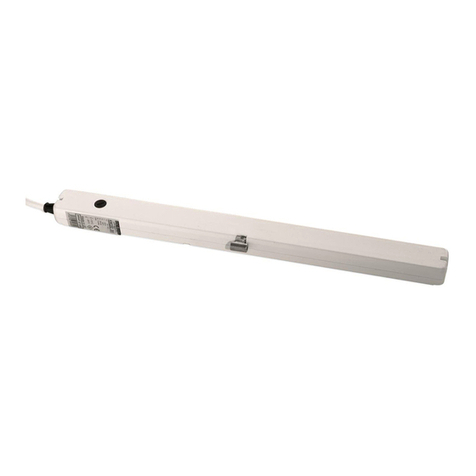
nekos
nekos KIMO 202 User manual
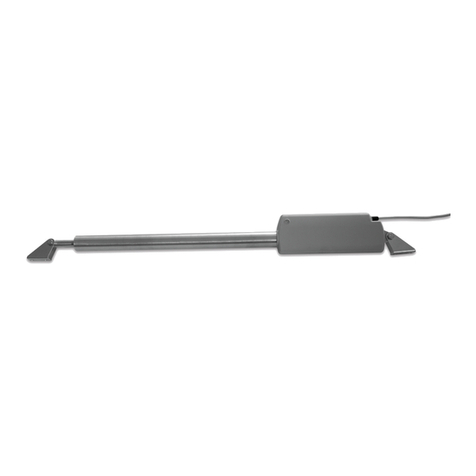
nekos
nekos ROCK 230 V User manual
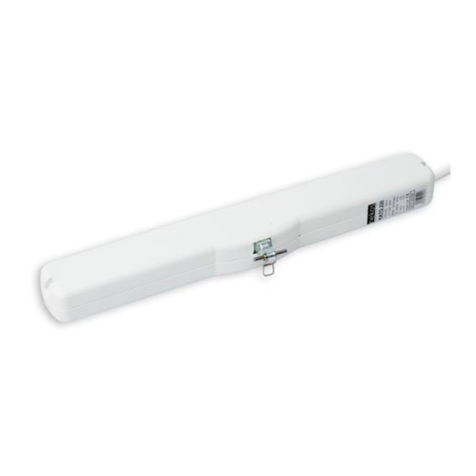
nekos
nekos KATO RADIO 230V User manual

nekos
nekos SKY 650 User manual
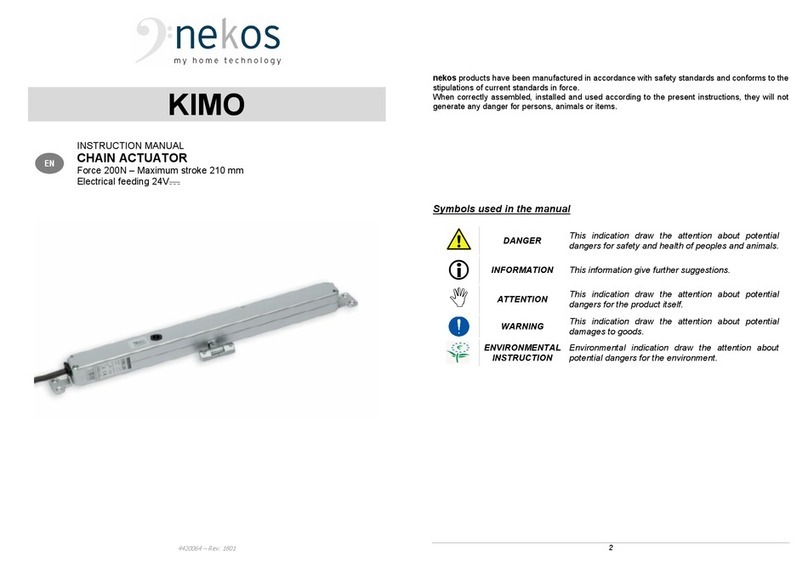
nekos
nekos KIMO User manual

nekos
nekos SKY 450 User manual

nekos
nekos INKA 356 Series User manual
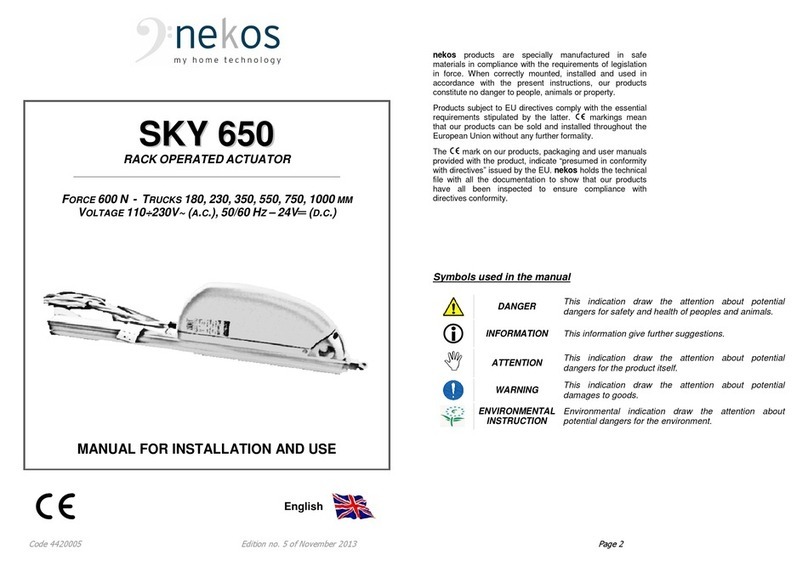
nekos
nekos SKY 650 User manual
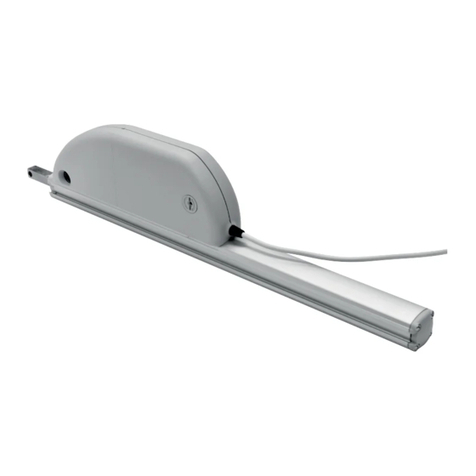
nekos
nekos SKYRO 650 User manual
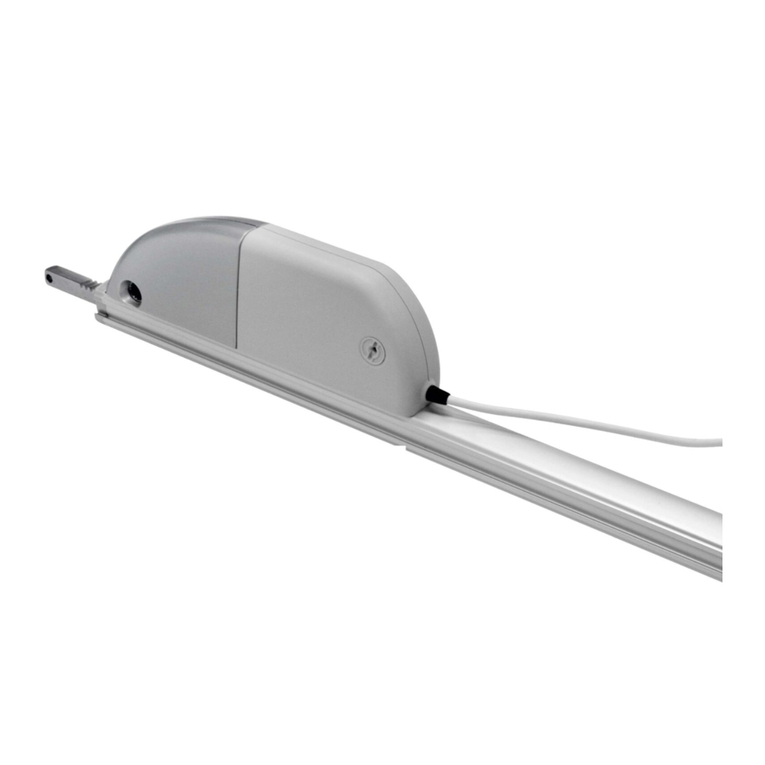
nekos
nekos SKYRO 850 User manual
